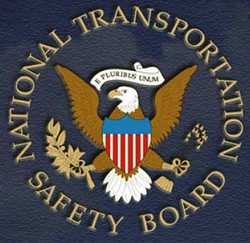Wed, Apr 24, 2024
Mooney M20K Fatal Accident; Pilot Loses Control in IMC
The NTB has concluded its investigation into an accident involving a Mooney M20K aircraft that resulted in the death of the pilot. The crash occurred on June 10, 2022, shortly after takeoff from an airport in Camarillo, California. The aircraft was destroyed upon impact after the pilot lost control during flight.

The NTSB's final report attributes the probable cause of the accident to the pilot's spatial disorientation and subsequent loss of control of the aircraft after entering IMC. These conditions were characterized by low visibility, mist, and cloud tops ranging from 400 to 1,600 feet.
On the day of the accident, the instrument-rated pilot, who was unfamiliar with the airport, planned a flight to his home base. Despite the challenging weather conditions, which were communicated during a pre-flight briefing, the pilot filed an IFR flight plan, requesting VFR-on-top. After a routine engine run-up and takeoff, the pilot likely entered the clouds but failed to establish contact with the departure controller as instructed.
Witness accounts and video evidence suggest that the aircraft was flying low and perpendicular to the takeoff direction without any signs of mechanical failure before it impacted the ground near a freeway. Investigations confirmed that the engine was functioning at high power at the time of the crash, and there were no pre-impact mechanical malfunctions or failures. The aircraft was also appropriately configured for the initial takeoff climb, dismissing the possibility of pilot error in aircraft configuration.
Further examination revealed the pilot was not instrument current; he had not met the recent flight experience requirements to operate under IFR. The pilot had significant cardiovascular health issues, including moderate coronary artery disease and an implanted pacemaker/defibrillator, which posed an increased risk of sudden impairment. However, no definitive forensic evidence suggested an incapacitating event occurred just before the crash.
The absence of ADS-B and radar tracking indicated that the aircraft did not reach a sufficient altitude after entering the clouds, supporting the theory of spatial disorientation. This condition can cause a pilot to lose sense of direction and aircraft attitude, leading to a loss of control.
The NTSB's investigation underscores the importance of adhering to flight and medical certification requirements, especially under challenging flight conditions. This accident illustrates the dangers of spatial disorientation and the need for rigorous compliance with aviation safety standards.
More News
Its Offerings Are Lighter, Cleaner, and Now Pushing Past 1,000nm on SAF Jet Fuel DeltaHawk’s diesel-powered aircraft lineup has seen incredible upgrades over the last few yea>[...]
The Airplane Experienced A Total Loss Of Engine Power On December 3, 2025, about 1600 central standard time, a Mooney Aircraft Corp. M20K, N57229, was substantially damaged when it>[...]
Make Sure You NEVER Miss A New Story From Aero-News Network Do you ever feel like you never see posts from a certain person or page on Facebook or Instagram? Here’s how you c>[...]
Aero Linx: European Society of Aerospace Medicine (ESAM) As a pan-European, independent forum, it works to promote the safety and health of all persons involved in aviation and spa>[...]
“We are excited to see Wisk achieve this milestone, and I’m so proud of the team that made it possible. The team at Wisk has built advanced technologies across flight c>[...]
 Aero-TV: DeltaHawks Diesel Power Steps Into the Spotlight
Aero-TV: DeltaHawks Diesel Power Steps Into the Spotlight NTSB Prelim: Mooney Aircraft Corp. M20K
NTSB Prelim: Mooney Aircraft Corp. M20K ANN FAQ: Turn On Post Notifications
ANN FAQ: Turn On Post Notifications ANN's Daily Aero-Linx (12.20.25)
ANN's Daily Aero-Linx (12.20.25) Aero-News: Quote of the Day (12.20.25)
Aero-News: Quote of the Day (12.20.25)



